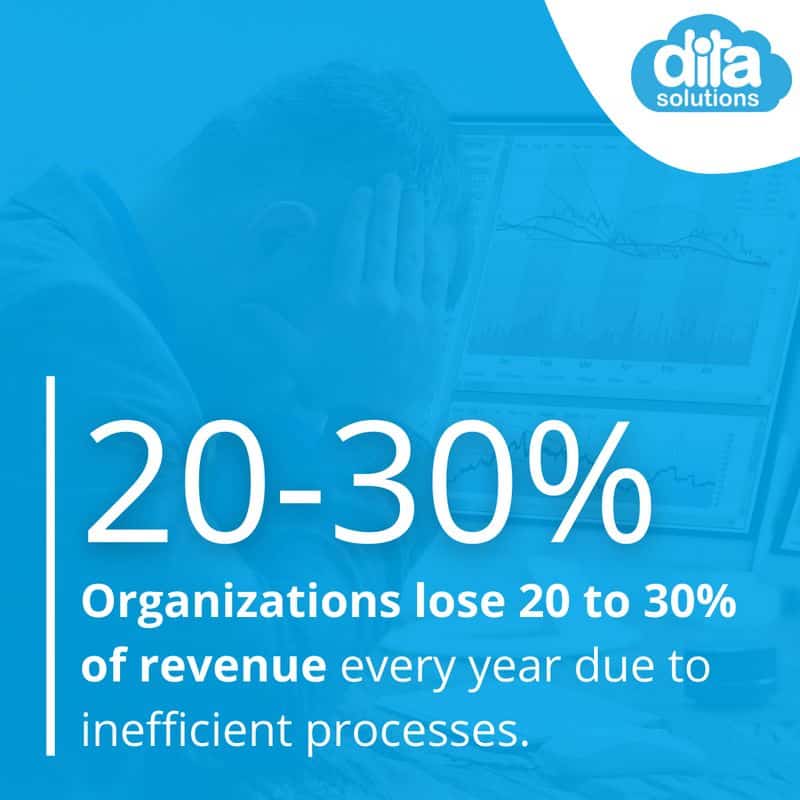Understanding Business Automation
It’s hard to ignore it – we are living in a digital era. Businesses goals are shifting, and agility and speed are key performance indicators in most organisations. However, many businesses still using outdated processes and manual workflows. So, how does your business move forward in this digital era to both adapt and adopt these changes? Automation is the answer, and understanding business automation is the key.
What is business automation?
Automation and Digital Transformation go hand in hand. It’s the process of using digital technologies to create new, or modify existing business processes, culture, and customer experiences to meet changing business and market requirements.
How do you know if it’s time for your business to automate?
Well, there are red flags every business should be aware of which show it’s time to improve your processes:
Did You Know?
Organisations lose 20 - 30% of revenue every year due to inefficient processes?
Changing from manual to automated business processes allows for error minimisation. The reduction of operational costs is demonstrated by the fact that businesses that automated their processes drove down overall costs by 10% and increased overall profits by 8%.

Understanding Automation
Benefits of Automating your Business
No two businesses are the same and every industry is different – so business automation will mean something different to every organisation. But the generally consensus with most businesses that automate, there are clear advantages;
Steps to Automate Your Business
You’ve seen the red flags, you know the benefits of automation – so what are the steps you need to follow to actually automate your business?
Identify your current workflow processes
Understanding how your current processes work is crucial to knowing how to automate your workflow. If you are a predominantly manually operated organisation, the digital transformation process will have quite a positive effect on your workplace procedures. With the implementation of digital transformation, your business will adapt to automated processes which, in effect, will save you time, money, and resources.
Distinguish Your Bottleneck Drawbacks
Obtaining the knowledge of what your bottlenecks are, as well as the physical aspects of your processes, will give a clear understanding of the problems that need fixing. Once you have identified where your manual processes are letting you down, and what manual tasks you are spending most of your time on, you can implement the best changes needed for your automation processes.
Determine your business goals
Identifying your business goals helps to identify improvements you hope to achieve through digital transformation. When you're are aware of where you would like your business to be in the future, it will be a smoother process to implement Digital Transformation and automation changes.
Map new and efficient workflows
Once you understand your business goals, you can then design and map a new workflow process. Your new workflow will be automated through the new digital strategy and align directly with your organisation's goals. These new workflow process will be designed to minimise your manual processes, saving time and eliminating the risk of human error throughout your organisation.
Continue with developments
It is important to remember that you can automate everything all at once. Digitalisation should be gradual as businesses need to adapt to continuing changes and external challenges.
Want to Learn More?
Are you keen to learn more about implementing a Digital Transformation Strategy for your business with dita Solutions.
Ready to get started?
Businesses don’t have the time to do everything manually. As a business ourselves, we understand the need to automate. So, we created a system to make day to day procedures a little bit easier. Our solutions are easy to use and extremely efficient, with simplicity always at the core of what we do.
